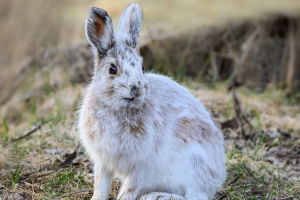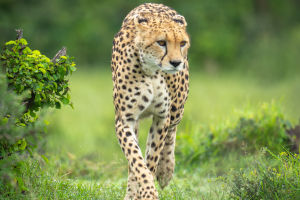As the cold months approach, many animals prepare for an extraordinary journey into deep sleep. Hibernation is one of nature's most fascinating survival strategies. But what exactly happens during this extended rest?
Why do some animals hibernate while others do not? In this article, we'll uncover the secrets behind hibernation, revealing how it helps animals survive harsh winter conditions and the amazing biological processes involved.
What Is Hibernation?
Hibernation is a state of significantly reduced metabolic activity that some animals enter to survive periods of cold weather and scarce food. During hibernation, an animal's heart rate, breathing, and body temperature drop dramatically, slowing down physical functions to conserve energy.
This deep dormancy can last for weeks or even months, allowing animals to endure times when finding food is almost impossible.
Which Animals Hibernate?
Hibernation is common among various mammals, such as hedgehogs, bats, ground squirrels, and chipmunks. But it's not limited to mammals; some reptiles and amphibians also enter similar states. Interestingly, not all animals that "sleep" through winter are true hibernators.
For example, hedgehogs enter a lighter form of dormancy called torpor, where their metabolism slows but not as deeply as true hibernators like ground squirrels.
Biological Mechanisms Behind Hibernation
How do animals manage to slow their metabolism so drastically without harming their organs? The secret lies in complex physiological changes. Animals accumulate oil reserves before winter, which act as their energy supply during hibernation.
Their bodies reduce blood flow to non-essential organs and protect brain cells from damage due to low oxygen. Hormones such as melatonin and insulin help regulate the transition into and out of hibernation. Some animals even produce special proteins that protect cells from freezing or dehydration.
The Role of Body Temperature
A key feature of hibernation is the drop in body temperature. For example, ground squirrels can lower their temperature close to freezing, matching the chilly environment. This reduction slows chemical reactions inside the body, which decreases energy consumption.
However, maintaining this balance is tricky—if the temperature drops too low, it can cause tissue damage. Animals have evolved precise control systems to maintain safe temperature limits during hibernation.
Periodic Arousals: Waking Up During Winter?
You might wonder if hibernating animals stay completely unconscious throughout winter. Surprisingly, many hibernators periodically wake up for short periods. These arousals help them eliminate waste, restore some brain activity, and maintain immune function.
Scientists are still studying why these brief awakenings are necessary, but they seem vital for long-term survival during hibernation.
Environmental Triggers for Hibernation
Changes in temperature and daylight length signal animals to prepare for hibernation. Shorter days and dropping temperatures trigger hormonal shifts that prompt animals to eat more and build oil reserves. Some species rely on internal biological clocks synced to seasonal changes, while others respond directly to external environmental cues.
Understanding these triggers helps researchers predict how climate change might affect hibernation patterns.
Why Is Hibernation Important?
Hibernation allows animals to survive extreme conditions when food is scarce and temperatures are dangerously low. Without this strategy, many species would struggle to endure winter. It also helps preserve energy for reproduction and growth in the spring.
From an ecological perspective, hibernation contributes to the balance of ecosystems by influencing animal behaviors, population dynamics, and predator-prey relationships.
Recent Research and Human Applications
Scientists study hibernation to understand its potential benefits for humans. Research on metabolic slowdown and structure protection during hibernation could inspire medical advances in areas like structure transplantation, trauma treatment, and even space travel.
Understanding how animals safely lower their body functions might help develop methods to protect humans in extreme conditions or during long surgeries.
Final Thoughts: Nature's Winter Miracle
Hibernation is a remarkable natural adaptation that continues to intrigue scientists and nature lovers alike. It reminds us of the incredible ways life evolves to meet environmental challenges. Next time you see animals preparing for winter, remember the deep biological secrets hidden beneath their peaceful slumber.
Have you ever witnessed an animal entering or waking from hibernation? What fascinates you most about this natural phenomenon?


